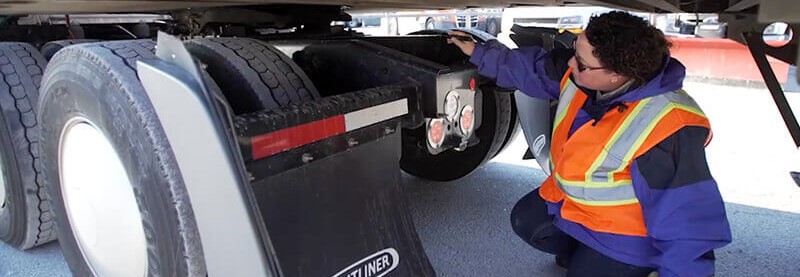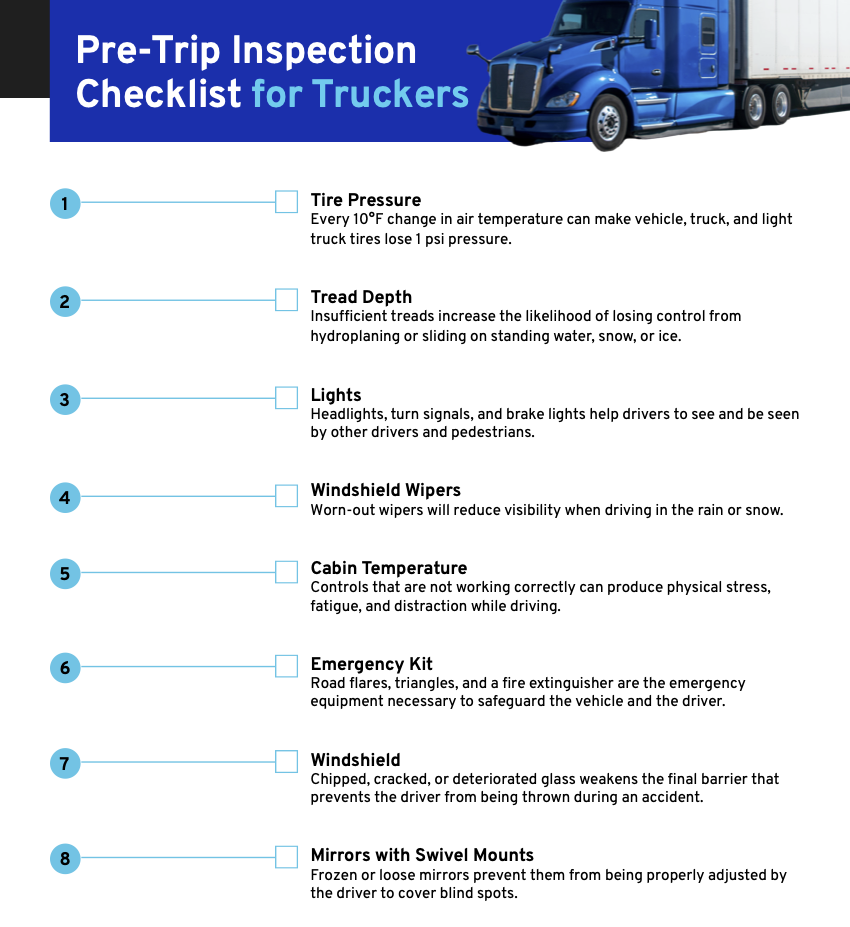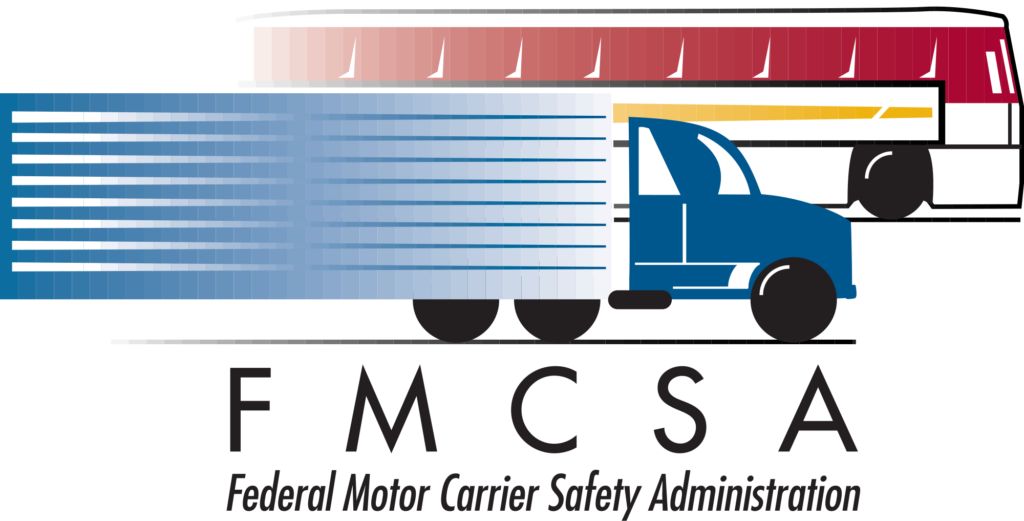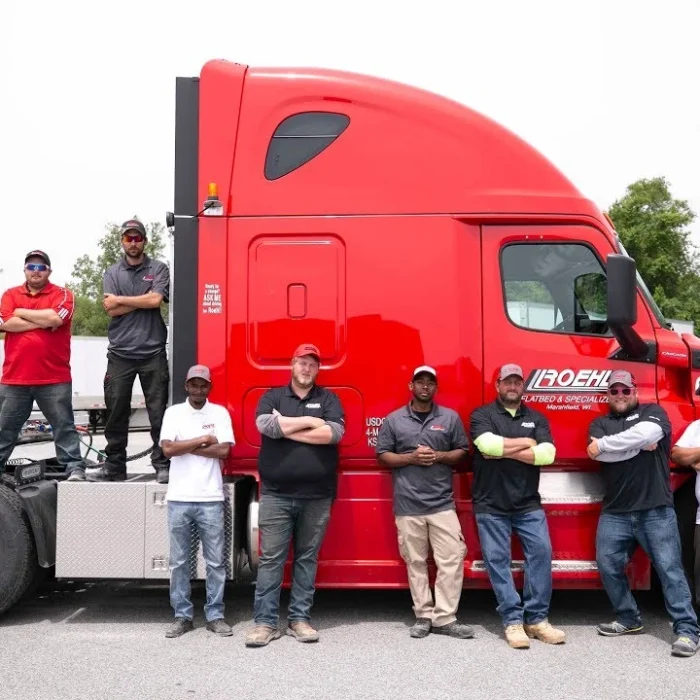PAGE Contents
- What is truck driving?
- Truck drivers lifestyle
- Pros of being a truck Driver
- Cons of being a truck Driver
- Difference between truck driving and commercial motor vehicle driving
- Tractor trailer truck drivers
- The professional truck driver
- Truck driving school
- Company drivers
- New drivers
- Pre-trip inspection
- Rules of trucking
- FAQ
What is Truck Driving?
Truck driving remains an indispensable industry that keeps goods moving across the country. Truck drivers play a crucial role in the supply chain by ensuring that goods are delivered on time and in good condition. However, this career is not for everyone, as it requires a lot of time on the road and adherence to strict safety regulations. In this article, we will discuss the benefits and drawbacks of a career in truck driving.

TRUCK DRIVERS LIFESTYLE
Driving a truck for a living is a challenging profession that demands physical stamina, mental fortitude, and adaptability to unpredictable situations. Truck drivers have to spend long hours on the road, driving through various weather conditions, and facing numerous challenges. However, the job also offers many benefits, such as flexibility, job security, and financial stability.
Working Conditions
Truck drivers work in a variety of settings, including local delivery, long-haul trucking, and regional transport. They may work for a trucking company, a logistics provider, or be self-employed. Typically, a truck driver’s workday starts early in the morning and may last up to 14 hours a day. They have to drive for hours on end, dealing with traffic, inclement weather, and navigating unfamiliar terrain. Additionally, truck drivers have to manage paperwork, maintain logs, and follow strict safety regulations.
Challenges Faced by Truck Drivers
Truck driving is a challenging profession that comes with many difficulties. Some of the most significant challenges include long hours, isolation, and a sedentary lifestyle. Truck drivers spend long hours on the road, away from their families and friends, leading to loneliness and feelings of isolation. Moreover, they have to sit for extended periods, leading to various health issues such as obesity, back pain, and high blood pressure. Additionally, truck drivers have to deal with traffic congestion, inclement weather, and other unpredictable situations on the road.
Health and Lifestyle of Truck Drivers
The health and lifestyle of truck drivers are essential to their well-being and overall job performance. Truck drivers have to deal with various health issues, such as obesity, diabetes, and high blood pressure, due to their sedentary lifestyle and unhealthy eating habits. To address these concerns, truck drivers must follow a healthy lifestyle, including regular exercise, balanced nutrition, and adequate rest. Furthermore, they can participate in programs that offer health education and wellness support.
Pros of being a Truck Driver:
If you’re considering a career in truck driving, there are many benefits to take into account. From job security to flexibility, this profession can be an excellent choice for those who enjoy working independently and seeing the world. In this article, we’ll explore the advantages of being a truck driver and why this career path might be right for you.

Job Security in the Trucking Industry
One of the biggest advantages of becoming a truck driver is job security. The demand for truck drivers is always high, and it’s a profession that shows no signs of slowing down. With the need for goods and products to be transported across the country, the trucking industry plays a vital role in the economy. This means that if you pursue a career in truck driving, you’re likely to have steady employment and a reliable source of income.
Good Pay for Truck Drivers
Another advantage of being a truck driver is the potential for good pay. While the exact salary can vary depending on your level of experience and the location where you work, it’s generally a well-paying job. According to the Bureau of Labor Statistics, the median annual wage for heavy and tractor-trailer truck drivers was $47,130 in May 2020. This salary is above the national median for all occupations, making it a lucrative option for those who enjoy driving.
Opportunities for Travel
If you’re someone who enjoys seeing new places and experiencing different cultures, truck driving can be an excellent career choice. As a truck driver, you’ll have the opportunity to travel across the country and even cross international borders. You’ll get to see parts of the world that many people never have the chance to experience. Whether you prefer the hustle and bustle of big cities or the serenity of rural landscapes, a career in truck driving can provide you with the chance to explore new areas.
Independence in Your Job
Truck drivers also enjoy a lot of independence in their work. While they’re part of a larger team and often have a dispatcher to communicate with, they’re also on the road by themselves for long stretches of time. This means that they have the autonomy to make decisions and solve problems on their own, which can be very rewarding for those who enjoy working independently.
Flexible Schedules for Truck Drivers
Finally, many trucking companies offer flexible schedules, which can be a major perk for those who prefer non-traditional work hours. If you’re a night owl or prefer to work on weekends, you may be able to find a trucking job that fits your schedule. This can be a great option for those who have other commitments in their personal lives or just prefer to work outside of the 9-to-5 schedule.
Looking for a CDL-A job?
Apply right now and we will get in touch with you soon to discuss your needs and desires!
Cons of being a Truck Driver:
Truck driving is a demanding profession that requires long hours, a significant amount of time on the road, and the ability to manage heavy loads. However, the job also comes with unique challenges that can take a toll on the physical and mental health of drivers. In this article, we’ll explore some of the most significant challenges faced by truck drivers and how they can impact their well-being.

Long Hours: The Impact on Truck Drivers
Truck drivers can be on the road for extended periods, sometimes for days or even weeks at a time. This can lead to long hours and exhaustion, which can cause physical and mental fatigue. It’s not uncommon for truck drivers to work up to 70 hours in a week, which can take a toll on their health. Long hours can also cause sleep deprivation, which can impair the driver’s ability to react quickly to changing road conditions.
Isolation: The Effect on Truck Drivers
Because truck drivers spend so much time on the road, they may feel isolated from friends and family. They also miss out on important events such as birthdays and holidays. The lack of social interaction can lead to feelings of loneliness and depression, which can have a negative impact on mental health. To combat isolation, some drivers stay in touch with their loved ones through social media or phone calls during breaks. However, it’s not the same as being physically present for those important moments.
Health Risks: The Consequences for Truck Drivers
Sitting for extended periods can lead to health problems such as back pain, obesity, and poor circulation. Truck drivers are also at risk of developing conditions such as sleep apnea due to the long hours of sitting. The lack of exercise can lead to weight gain and other health problems. Additionally, truck drivers face the risk of accidents, which can cause serious injuries or even death. Ensuring that they take regular breaks and engage in physical activity can help mitigate some of these health risks.
Regulations: The Challenges for Truck Drivers
Truck drivers are subject to strict regulations, including limitations on driving hours and requirements for rest breaks. These regulations can be challenging to navigate and can lead to penalties for non-compliance. In addition, drivers need to maintain detailed records of their driving time and rest breaks to comply with federal regulations. This can be time-consuming and can add to the stress of an already demanding job.
DIFFERENCE BETWEEN TRUCK DRIVING AND COMMERCIAL MOTOR VEHICLE DRIVING

While truck driving is a type of commercial motor vehicle driving, there are several key differences between these two terms.
Vehicle Size
Truck driving generally involves driving larger vehicles that are used to transport goods, while commercial motor vehicle driving can involve vehicles of various sizes.
Job Type
Truck driving jobs are often focused on the transportation of goods and materials, while commercial motor vehicle driving jobs can include transporting passengers as well.
Licensing Requirements
Truck drivers are required to hold a commercial driver’s license (CDL), while other types of commercial drivers may not be required to hold a CDL.
Training Requirements
Truck driving often requires specialized training and certification, while other types of commercial driving jobs may not require the same level of training.
Salary and Benefits
Truck drivers may earn more than other types of commercial drivers, as the job can be more demanding and requires specialized training. Additionally, truck drivers may receive benefits such as health insurance and retirement plans.

TRACTOR TRAILER TRUCK DRIVERS
Tractor-trailer truck driving and semi-truck driving are often used interchangeably, but they are not the same. In fact, there are significant differences between the two, including the type of vehicle driven, licensing requirements, and job duties. In this article, we will discuss the differences between tractor-trailer truck driving and semi-truck driving.

What Is Tractor Trailer Truck Driving?
Tractor-trailer truck driving involves driving a combination of a tractor and a trailer. The tractor is the power unit, and it is attached to a trailer, which carries the cargo. Tractor-trailer trucks are also known as 18-wheelers or big rigs, and they are commonly used to transport goods over long distances.
Tractor-trailer truck driving is a specialized skill that requires extensive training and experience. Drivers need to have a commercial driver’s license (CDL) and be trained on the specific type of tractor-trailer they will be driving. They also need to be knowledgeable about the regulations governing the transportation of goods.
THE PROFESSIONAL TRUCK DRIVER
A professional truck driver is a licensed operator of commercial trucks who is responsible for transporting goods and products. They typically drive long distances, sometimes over several days or weeks, to deliver their cargo. A professional truck driver must possess a commercial driver’s license (CDL) and be skilled in maneuvering a large truck through different terrains and weather conditions.

TRUCK DRIVING SCHOOL
Truck driving schools provide the necessary training for aspiring truck drivers to obtain their commercial driver’s license (CDL) by doing a skills test. These schools offer a variety of programs that include classroom instruction, hands-on training, and driving practice. The programs usually range from several weeks to several months, depending on the school and the type of training you choose.

Types of Training
There are two types of training offered by truck driving schools: Class A and Class B. Class A training prepares you to drive a combination of vehicles with a gross vehicle weight rating (GVWR) of 26,001 pounds or more, while Class B training prepares you to drive a single vehicle with a GVWR of 26,001 pounds or more.
Class A Training
Class A training is the most common type of training offered by truck driving schools. This program teaches you how to operate combination vehicles, such as tractor-trailers, that have a GVWR of 26,001 pounds or more. Class A training includes classroom instruction, hands-on training, and driving practice.
Class B Training
Class B training is a shorter program than Class A training and is designed for drivers who want to operate a single vehicle with a GVWR of 26,001 pounds or more. This program also includes classroom instruction, hands-on training, and driving practice.
Choosing a Truck Driving School
Choosing the right truck driving school is crucial to your success as a professional truck driver. Here are some things to consider when choosing a school:
Accreditation
Make sure the school you choose is accredited by a recognized organization. Accreditation ensures that the school has met certain standards and provides quality training. To get the accreditation you will have to pass the required skills test.
Curriculum
Check the school’s curriculum to make sure it covers everything you need to learn to become a professional truck driver. The curriculum should include classroom instruction, hands-on training, and driving practice.
Facilities
Check the school’s facilities to make sure they are clean and well-maintained. The school should have up-to-date equipment and vehicles for training.
Tuition and Financial Aid
Compare the tuition fees of different schools to find one that fits your budget. You should also check if the school offers financial aid or scholarships to help you pay for your training.
Job Placement
Check if the school offers job placement services or has partnerships with trucking companies to help you find a job after you complete your training.
Benefits of Attending Truck Driving School
Attending a truck driving school has several benefits, including:
Proper Training
Truck driving schools provide you with the proper training you need to become a professional truck driver. The training includes classroom instruction, hands-on training, and driving
COMPANY DRIVERS
If you are considering a career as a professional truck driver, one of the first decisions you will need to make is whether to become an owner-operator or a company driver. While owner-operators own and operate their own trucks and are responsible for finding and securing their own loads, company drivers are employed by trucking companies and are assigned loads to haul. This article will explore the benefits and drawbacks of being a company driver.

Benefits of Being a Company Driver
Steady Income: One of the biggest advantages of being a company driver is having a steady income. You can rely on a regular paycheck and benefits such as health insurance, retirement plans, and paid time off. These benefits are typically not available to owner-operators, who must pay for their own benefits out of pocket.
Less Financial Risk: You are not responsible for the cost of the truck, maintenance, or repairs. The trucking company covers these expenses, reducing the financial risk for the driver. In contrast, owner-operators are responsible for all of these expenses, which can be substantial and unpredictable.
Less Administrative Work: You do not need to worry about finding loads, negotiating rates, or handling paperwork. The trucking company takes care of all of these administrative tasks, leaving you free to focus on driving and delivering your assigned loads.
Access to Training and Advancement Opportunities: Many trucking companies offer training programs and opportunities for advancement for their company drivers. These programs can help you improve your skills, increase your earning potential, and advance in your career.
Drawbacks of Being a Company Driver
Lack of Control: You do not have control over which loads you haul, where you go, or when you work. The trucking company decides these things for you, and you must follow their instructions. This lack of control can be frustrating for some drivers.
Lower Earnings Potential: While company drivers have a steady income, their earnings potential is typically lower than that of owner-operators. Company drivers are paid a fixed rate per mile or hour, while owner-operators can negotiate higher rates for their services.
Limited Flexibility: Company drivers are typically required to work on a set schedule, with little flexibility for time off or scheduling changes. This can be difficult for drivers who have family obligations or other commitments that require more flexibility.
Limited Autonomy: You are essentially an employee of the trucking company, and you must follow their rules and regulations. This can limit your autonomy as a driver, and you may not have the freedom to make your own decisions about how to operate your truck.
NEW DRIVERS
As a new truck driver, you’re likely excited to hit the open road and start exploring new places. However, driving a truck can be challenging, and it’s important to know some tips and tricks that will help you stay safe and successful. In this article, we’ll provide you with valuable information on how to become a better truck driver and make the most of your new career.

I. Understanding Your Vehicle
When you’re driving a truck, it’s important to understand your vehicle. This means taking the time to learn about the different parts of your truck, how to perform basic maintenance, and how to operate all of the different systems. Knowing how to use your mirrors and adjust your seat and steering wheel is also important for ensuring that you’re comfortable and in control while driving.
II. Planning Your Route
Another key to success as a truck driver is planning your route carefully. This means taking the time to study your map, identifying potential obstacles or hazards, and knowing where you can stop for food, fuel, and rest. You’ll also need to plan your route to ensure that you’re adhering to all applicable laws and regulations, such as weight limits, speed limits, and hours-of-service rules.
III. Practicing Safe Driving Habits
As a truck driver, it’s your responsibility to practice safe driving habits at all times. This includes obeying traffic laws, paying attention to the road, and avoiding distractions such as cell phones or other electronic devices. You should also maintain a safe following distance from other vehicles, and avoid driving too fast for the conditions.
IV. Staying Alert and Focused
One of the most important things you can do as a truck driver is to stay alert and focused while you’re behind the wheel. This means getting plenty of rest before you start driving, taking breaks as needed, and avoiding fatigue or drowsiness. It’s also important to stay alert to changing road conditions, weather, and traffic patterns, and adjust your driving accordingly.
V. Communicating with Others
As a truck driver, you’ll need to communicate with other drivers, dispatchers, and other stakeholders in the transportation industry. This means using your radio or other communication devices to stay in touch, and keeping your cool even in stressful situations. You should also be aware of the different types of signals and hand gestures that other drivers might use to communicate with you on the road.
VI. Staying Organized and Prepared
As a truck driver, it’s important to stay organized and prepared at all times. This means keeping your vehicle and paperwork in good order, and staying up-to-date on all required permits and licenses. You should also keep a well-stocked emergency kit in your truck, including items such as a flashlight, first aid kit, and extra food and water.
VII. Knowing When to Ask for Help
Finally, it’s important to know when to ask for help as a truck driver. Whether you’re facing a mechanical problem, bad weather, or other unexpected challenges, it’s important to be able to reach out to your dispatcher, fellow drivers, or other professionals for support and advice.
PRE TRIP INSPECTION
Pre-trip inspections are an essential part of the truck driving routine. They help to identify potential problems before they become major issues that could cause accidents or breakdowns. Pre-trip inspections are required by law and can help drivers avoid fines and keep themselves and others safe on the road. In this article, we will discuss everything you need to know about pre-trip inspections for semi-trucks.

Why is a Pre-Trip Inspection Necessary?
To ensure the safety of the driver, passengers, and other motorists on the road. It can also help to identify potential problems before they become major issues that could cause accidents or breakdowns. Conducting a pre-trip can also help drivers avoid fines and penalties for driving a truck that is not in compliance with safety regulations.
What are the Steps in a Pre-Trip Inspection?
A pre-trip inspection for a semi-truck can be divided into three parts: the external inspection, the cab inspection, and the engine compartment inspection.

External Inspection
During the external inspection, the driver should check the following parts:
Lights: All lights should be in working order, including the headlights, turn signals, and brake lights.
Mirrors: Mirrors should be adjusted correctly and not cracked or broken.
Tires: Tires should be properly inflated, have adequate tread, and not have any visible damage or wear.
Wheels and rims: The wheels and rims should be free of damage or cracks.
Brakes: The brakes should be checked for wear and proper operation.
Cab Inspection
The cab inspection includes checking the following parts:
Horn: The horn should be in working order.
Gauges: All gauges, including the speedometer, oil pressure gauge, and temperature gauge, should be working correctly.
Seat belts: All seat belts should be in good condition and working properly.
Windows and windshield: The windows and windshield should be clean and free of cracks.
Engine Compartment Inspection
During the engine compartment inspection, the driver should check the following parts:
Engine oil level: The engine oil level should be checked and should be within the recommended range.
Coolant level: The coolant level should be checked and should be within the recommended range.
Belts and hoses: Belts and hoses should be checked for wear and damage.
Battery: The battery should be securely mounted and not leaking.
What Should You Do If You Find a Problem During a Pre-Trip Inspection?
If you find a problem during a pre-trip inspection, you should report it to the maintenance department or repair the problem before starting your trip. If the problem cannot be fixed, the truck should not be driven until the issue is resolved. It is essential to note that driving a truck that is not in good working condition can result in accidents or breakdowns.
Looking for a CDL-A job?
Apply right now and we will get in touch with you soon to discuss your needs and desires!
RULES OF TRUCKING
Trucking is an industry that has several rules and regulations, both at the federal and state level. These rules are put in place to ensure the safety of drivers, passengers, and other road users, as well as to ensure that the transportation of goods and products is efficient and compliant with the law. Trucking companies and drivers should be familiar with the rules and regulations of the industry to avoid any violations that could lead to fines, penalties, or even accidents. Due to recent events the rules are going to be changing soon and are always changing with the changing economy.

Federal Motor Carrier Safety Administration (FMCSA) Regulations
The FMCSA is the main regulatory agency that oversees the trucking industry in the United States. The agency is responsible for regulating and enforcing safety regulations for commercial motor vehicles. The FMCSA’s regulations cover various aspects of the trucking industry, including driver qualification, hours of service, vehicle maintenance, and cargo securement.
Driver Qualification Regulations
The FMCSA’s driver qualification regulations outline the requirements that commercial drivers must meet to be qualified to drive a commercial motor vehicle (CMV). These requirements include having a valid commercial driver’s license (CDL), passing a medical examination, and meeting age and experience requirements.
Hours of Service Regulations
The hours of service (HOS) regulations dictate the amount of time that a driver can operate a CMV before taking a break or rest. The purpose of these regulations is to prevent driver fatigue, which is a significant cause of accidents in the trucking industry. The HOS regulations specify the maximum driving and on-duty hours for drivers, as well as the minimum rest and break periods.
Vehicle Maintenance Regulations
The FMCSA’s vehicle maintenance regulations require trucking companies to ensure that their vehicles are safe and in good working condition. These regulations cover various aspects of vehicle maintenance, including regular inspections, repairs, and the use of proper equipment.
Cargo Securement Regulations
Cargo securement regulations are put in place to ensure that the cargo transported in commercial motor vehicles is properly secured and does not pose a hazard to other road users. These regulations specify the methods and equipment that trucking companies must use to secure their cargo, depending on the type of cargo being transported.
State Trucking Regulations
In addition to federal regulations, trucking companies and drivers must also comply with state regulations. State regulations may vary depending on the state, but they typically cover areas such as weight limits, permit requirements, and hazardous materials regulations.
Weight Limits
Weight limit regulations are put in place to ensure that commercial motor vehicles do not exceed the maximum weight allowed on the roads. Overloaded trucks can cause significant damage to roads and bridges, as well as pose a danger to other road users. State weight limit regulations may vary, so it is essential for trucking companies and drivers to be aware of the weight limits in the states they operate in.
Permit Requirements
Permit requirements may vary depending on the state and the type of cargo being transported. Special permits may be required for oversized or overweight loads, or for the transportation of hazardous materials.
Hazardous Materials Regulations
Hazardous materials regulations are put in place to ensure that the transportation of dangerous goods is done safely and in compliance with the law. Trucking companies and drivers that transport hazardous materials must adhere to specific regulations regarding the packaging, labeling, and handling of these materials.
Safety Rules and Best Practices for Trucking
Apart from regulatory compliance, there are several safety rules and best practices that trucking companies and drivers can follow to ensure safe and efficient transportation of goods and products. These rules and practices include:
Regular Vehicle Inspections
Regular vehicle inspections are essential for ensuring that the truck is in good working condition and does not pose a danger to other road users. Trucking companies should have a maintenance and inspection program in place to ensure that their vehicles are inspected regularly and any issues are addressed promptly.
Driver Training
Driver training is essential for ensuring that drivers are aware of the rules and regulations of the industry and have the necessary skills to operate a commercial motor vehicle safely. Trucking companies should invest in driver training programs and provide ongoing training to their drivers.
Avoid Distracted Driving
Distracted driving is a significant cause of accidents in the trucking industry. Drivers should avoid distractions such as texting, using a mobile phone, or eating while driving, as these activities can take their attention away from the road.
Use of Seat Belts
The use of seat belts is essential for the safety of the driver and passengers in the truck. Trucking companies should have a policy in place that requires the use of seat belts at all times.

FAQ
What qualifications do I need to become a truck driver?
To become a truck driver, you’ll need a commercial driver’s license (CDL). You can get a CDL by attending a truck driving school or by completing a training program offered by a trucking company. In addition to getting your CDL, you’ll need to meet certain medical and physical requirements to ensure that you can safely operate a truck on the road.
How much do truck drivers make?
The pay for truck drivers can vary depending on factors such as experience and location. However, in general, it’s a well-paying job. According to the Bureau of Labor Statistics, the median annual wage for heavy and tractor-trailer truck drivers was $47,130 in May 2020. It’s important to note that some trucking companies offer bonuses and other incentives that can increase a driver’s overall compensation.
What are the working hours for a truck driver?
Truck drivers can work long hours, sometimes for days or even weeks at a time. The hours can be irregular, and drivers may need to work during nights, weekends, and holidays. Some trucking jobs may require drivers to work in shifts, while others may involve longer trips with breaks in between. It’s important to be prepared for long hours on the road and to have a good support system in place to help you manage your time away from home.
We also help lease drivers find companies to work for, get in touch and we can talk more.
You can apply by clicking here.







